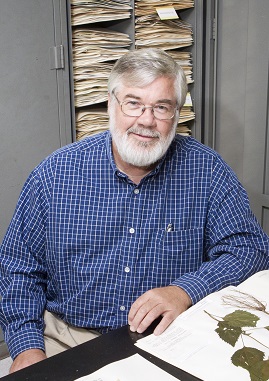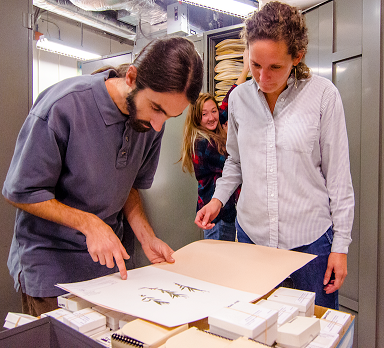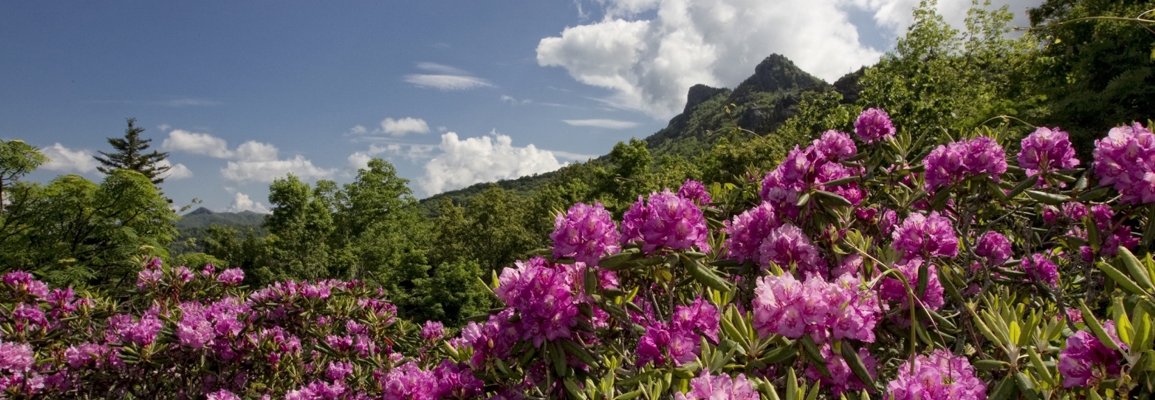Welcome to the I.W. Carpenter, Jr. Herbarium Est. 1958
The I.W. Carpenter, Jr. Herbarium contains approximately 29,000 specimens. We are rapidly adding new specimens to the collection, and are beginning the process of computerization. At present, the computerization is focused on the new accessions.
We view the role of the herbarium as multifaceted. The three main functions of the ASU Herbarium are for teaching, maintenance of vouchers, and development of a research herbarium with a focus on the flora of the Southern Appalachians.
 The herbarium must play a role as a teaching tool. Given our short growing season during the academic year, it is imperative that we have specimens available for students to examine. We have begun the process of separating a collection for teaching. This will reduce the wear and tear on specimens. The facility currently receives heavy use from graduate and undergraduate students who are doing floristic or ecological work. We average three to four graduate students and one to two undergraduates using the herbarium each semester in their research.
The herbarium must play a role as a teaching tool. Given our short growing season during the academic year, it is imperative that we have specimens available for students to examine. We have begun the process of separating a collection for teaching. This will reduce the wear and tear on specimens. The facility currently receives heavy use from graduate and undergraduate students who are doing floristic or ecological work. We average three to four graduate students and one to two undergraduates using the herbarium each semester in their research.
A second role for the ASU Herbarium is the maintenance of voucher specimens. We currently house at least one set of vouchers from a Blue Ridge Parkway study conducted by Gary Walker, Blue Ridge Parkway collections from two studies Murrell conducted, and an ongoing floristic study of the Tater Hill area. We are sure there are other vouchers that are embedded in the collection, but these have not been sorted and identified. Each of these voucher sets is not only important for the preservation of scientific investigations, they also represent a reservoir of information that can be used in follow-up studies from earlier works, such as the early studies at Tater Hill Basin. We should make attempts to obtain funds with any grants that require vouchers, but realistically we must be prepared to shoulder the bulk of the costs for graduate students' voucher collections.
 The third function of the ASU Herbarium should be the development of the facility as a research center for the flora of the Southern Appalachians. Although we do not foresee the collection matching that of research institutions in the Southeast such as the University of Tennessee, we expect, over the course of the next twenty years, significant contributions from various studies. These collections will be valuable as aids in identification, as well as in studies of vegetation of the past, present, and future. We currently have one to two loan requests per year, but we expect this number to increase as researchers realize we have an active facility.
The third function of the ASU Herbarium should be the development of the facility as a research center for the flora of the Southern Appalachians. Although we do not foresee the collection matching that of research institutions in the Southeast such as the University of Tennessee, we expect, over the course of the next twenty years, significant contributions from various studies. These collections will be valuable as aids in identification, as well as in studies of vegetation of the past, present, and future. We currently have one to two loan requests per year, but we expect this number to increase as researchers realize we have an active facility.
- Dr. Zack E. Murrell, Curator
-Mr. Andrew Jenkins, Curator
